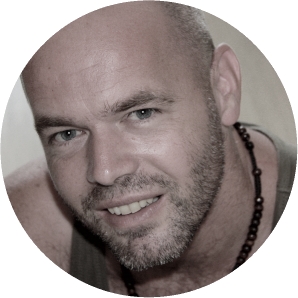Here is some more detail from your teachers about the topics they will be presenting at the weekend
Gianfranco Pace
- Some introductory exercises on the structure force. How to make a correct structure and how to move it in space.
- Training elastic force. How to make muscles elastic, transform tendons and enhance our defensive energy.
- The movement of the centre and spiral energy, essential elements for understanding explosive force.
- Training sensitive force. How to move the energy by means of the intention.
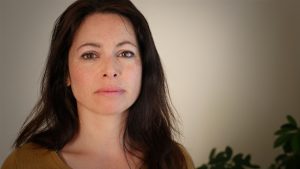 Tina Faulkner Elders
Tina Faulkner Elders
Daoyin Yangsheng Gong Stress Management
A dynamic routine that provides the tools to effectively manage our stress response and chronic stress.
Daoyin Yangsheng Gong inherently works holistically; calming the mind and alleviating physical symptoms.
 Sonja Schillo
Sonja Schillo
- Sha Qigong
Having achieved in-depth knowledge of Chinese medicine and various martial arts Sha Guozheng created a set of health exercises to benefit body and mind, health and martial arts skills.
- Baguazhang – basic exercises and principles
Baguazhang offers a variety of whirling, unforeseeable and stretching techniques improving especially the spiral energy.
- Tongbeiquan – basic exercises and principles
The explosive and wide reaching techniques open, speed up and strengthen body and mind.
- Xingyiquan – basic exercises and principles
The very clear, simple and straight forward movements enhance concentration and strength bringing body and mind together.
Emma Lee
1. Pushing Hands for Beginners.
Just what it says on the tin: an introduction to the objectives and principles of this partner practice. Perfect for all but particularly those who have in the past perhaps not engaged with this because of perceived competitiveness. This will be a non-confrontational, gentle and respectful workshop. Suitable for all.
2. A Reminder of the Ten Tai Chi Principles
Essential for anyone not familiar with the ten essential points, as Yang Chengfu called them, which offer us a means to better explore and practise our forms. This is also an excellent opportunity for anyone wanting to revisit them and perhaps learn a new perspective. This will be split into two workshops, each addressing five of these points. Suitable for all.
Having an understanding and awareness of this explosive power leads to a better understanding of forms and pushing hands. We will work on solo and co-operative partner exercises to help develop fa jin. Suitable for all.
Yanira Jigetsu Rodriguez
- Taiji Sword Foundations – Solo
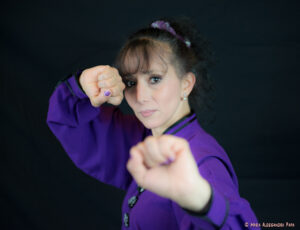
Practice of the taijijian is a great way to extend the range and benefits of barehand taijiquan. In this class, Yanira shares some of the most important basics for holding and wielding the sword.
- Taiji Sword Foundations – Partner
Partner work in taijiquan is by no means limited to push-hands. The same ideas at play in barehand partner practices—‘sticking,’ ‘listening,’ ‘neutralizing’—are also at play with the taijijian. This is a chance to quickly learn several fundamental partner-sword concepts with Yannira.
- Stance Phases – Modern
We all know that leg and waist movement is an important part of taijiquan practice whether they be solo, partner, barehand, or taiji weapons. But, where does this movement begin or end and how is the stance supposed to be integrated into form and push-hands practices? Yanira will show you the yin and yang of it all!
- Stance Phases – Traditional
The past masters left brilliant instructions though sometimes perplexing teachings. One of the most fundamental of these is the ‘wubu’ or ‘five stance-phases.’ Yanira will help you to unlock this ancient mystery in a way that will posively transform your taijiquan practice.
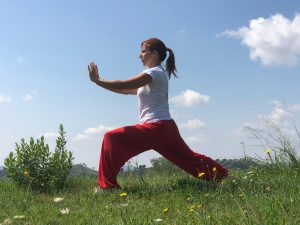 Margherita Padalino
Margherita Padalino
- 1. Exercises to discover the centre.
Internal movement starts from the centre, so it’s fundamental to have a clear appreciation of it.
- 5 animals qigong.
Working on our emotions in order to reinforce our character.
- Expansion & contraction exercises and their application in Tui Shou.
Expanding and contracting is the fundamental principle of Taijiquan practice. By means of simple exercises it will be easy to experiment with it.
- Water qigong.
How to understand the internal movement with the use of simple visualisations.
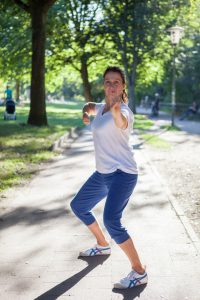 Margret Stürz
Margret Stürz
Quietness has two aspects: the external inactive state of the body and the inner mental quietness.
The term movement refers to external movement as well as to the inner movement of the Qi.
Quietness and Movement are always to be looked at in relationship. There is no change without movement – and movement finds only complete expression on condition of inner ease / quietness. The inner ease is the basis of each Qigong and Taiji-practice. Each Qigong-exercise regulates the system of meridians and recovers the flow of blood and Qi and has the main aspect either in movement or in the quietness.
I will offer you Qigong-exercises to practise:
Neigong – Inner exercises and
Waigong – External exercises of the body
with the right balance of Meditation, Imagination, Breath, Qi and Consciousness for a quality of presence and awareness.
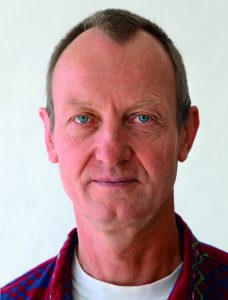 Wilhelm Mertens
Wilhelm Mertens
The body state and structure is not a static thing. It depends on your balance, as a dynamic state; You have to find a good inner adjustment for the distance; There is an up and down through your legs related to the weight; and all this has influence on your stepping and moving. We will consider four aspects of this over the weekend, each one being independent of the others so you can dip in and out.
- Being upright and previous
- What mains distance for the inner organisation
- What happened in the legs in moving and being loaded
- Footwork in Taijiquan
Javier Arnanz
- 360° Taijiquan
Taijiquan solo forms are usually presented along a straight line with only few reversals or direction changes. Freedom from this linear approach is needed to give the art full martial and artistic expression. In this session, Javier will take you through solo and partner exercises that give you a much greater control of space.
- Taiji’s ‘Trample-leg Stepping’
The stepping-kicking practice—called ‘caituigong’ in Chinese—is an important part of ‘single-posture training’ and is used in martially-applied taijiquan. Javier will present the caituigong training, connecting it to ‘Taijiquan’s Theory of Energies.’
Pim van den Broek
5 elements (push hands) with structure; Wood-Fire-Earth. After last year doing some introduction work, this year we will be looking a little bit closer. What is happening on a structural level with the theory of 5 elements. How can you feel it? If you didn’t participate last year, no problem- you’ll catch up.
5 elements (push hands) with structure; Metal-Water. After last year doing some introduction work, this year we will be looking a little bit closer. What is happening on a structural level with the theory of 5 elements. How can you feel it? If you didn’t participate last year, no problem- you’ll catch up.
Lifting Your Energy. From down comes up. From up comes down. And smile. We are going to connect upper and lower torso. After some initial exercises we let the energy find its way and once it stagnates we will try to give it a gentle boost to establish an upward connection. What happens afterwards, well, see for yourself. Not only for your tai chi, but if you need to relax here and now, this is a great exercise.
Soft vs hard, how do they enhance each other? We are going to have a look at softness and hardness. First checking if we can get this idea in our movement and from there on we will let these qualities enhance each other in a very swift movement, the one inch punch. Further development results in working on your FaJin. Having followed the 5 elements workshops mentioned before will be beneficial as we will borrow 2 insights from them.
 Bartos Samitowski
Bartos Samitowski
Depending on the experience of those participating in each session we will delve deeply or just scratch the surface of the principles of this art.
I Liq Chuan (literally translated as Mental-Physical Martial Art) is an art of cultivating consciousness based on Tai Chi and Chan (Zen) principles of non-assertion, non-resistance, harmony of yin and yang, oneness and the present moment.
In the universe all things are created by conditions and function through the energy of yin and yang. The whole universe has yin and yang energy. When yin and yang energy is balanced, they are harmonized. Students are taught the art through philosophy and a series of exercises in order to learn to recognize and discipline the inner energy flow (Chi). Developing this art benefits the whole nervous and intrinsic systems and brings total control, harmony and awareness to the mind and body.
By understanding the harmony (yin and yang) of the body, recognizing the limits of the structure, the movement in each of the three dimensional planes of cycles, the student transforms this internal energy into internal power, accumulating Chi which propels the appropriate natural body movements. I Liq Chuan makes you aware of your strength, its limits, and the best use of your strength for self-defense.
As a system of Kung Fu, I Liq Chuan emphasizes the development of internal power through mental attitude and awareness. The training develops sticking and merging abilities, circular spiral energy, Chin Na, F’a Jing, Chi Kung, and most importantly, integration of the mind’s complete awareness in the present moment –be it in daily life or any situation. The “inner feel” is cultivated first, and then the appropriate external movement is merely an expression of the developed “inner feel”.
Practitioners of I Liq Chuan integrate this art into their daily lives to maintain their awareness by not hurting themselves or others. The awareness developed reveals the nature of everything. Thus, the student understands cause and effect in life and has the ability to maintain the “right understanding” in all situations. Right mindfulness is the mental state of being neutral, formless, and in the present. It is a state (Wu Chi) of being emotionless and unattached to but being aware of the physical world.
Copyright 2025 Tai Chi Caledonia | Privacy Policy


